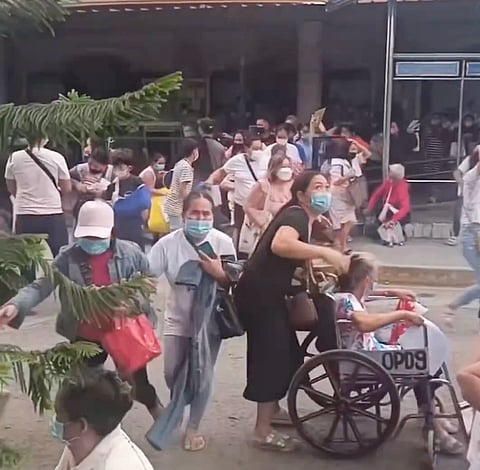

A magnitude 7.4 earthquake struck offshore near Manay town in Davao Oriental province on Friday, followed hours later by a 6.9 magnitude aftershock.
The initial quake, centered 43 kilometers east of the coast at a depth of 23 kilometers, killed at least six people and caused structural damage across the region.
Authorities issued tsunami warnings for coastal areas within 300 kilometers, prompting evacuations to higher ground.
The Philippines, located on the Pacific Ring of Fire, experiences frequent seismic activity, with over 800 earthquakes annually.
This event occurred two weeks after a 6.9 magnitude quake on Cebu island that claimed 74 lives.
Reports indicated widespread structural impacts from the first quake. In Mati City, two patients died of heart attacks at a hospital, and one resident perished after being struck by debris.
In Pantukan town, Davao de Oro province, a landslide triggered by the tremors killed two villagers, with several others injured and rescued by army troops and volunteers.
Another death occurred in Davao City, where a few hundred residents sustained injuries.
Buildings showed cracks, including walls at Davao International Airport, which remained operational.
Roads cracked, bridges became impassable, and homes as well as a church facade suffered damage. In Governor Generoso town, intense shaking caused fainting and dizziness among 50 high school students, who were hospitalized.
Classes were suspended in affected areas, and children evacuated schools in Davao City, home to about 5.4 million people.
Eyewitness accounts described vehicles shaking and power lines swaying wildly.
Disaster official Jun Saavedra recounted the ground swaying so severely that electricity cut out, with people fleeing buildings.
President Ferdinand Marcos Jr. stated that authorities were assessing damage and preparing search-and-rescue teams.
"We are working round the clock to ensure that help reaches everyone who needs it," he said.
The aftershock, a separate event known as a doublet quake along the Philippine Trench at a depth of 10 kilometers, renewed tsunami fears.
The Philippine Institute of Seismology and Volcanology warned of possible waves over one meter higher than normal tides and aftershocks up to magnitude 6.4. Coastal residents were urged to stay inland or on higher ground.
Small waves, measuring 3.5 to 17 centimeters, reached Indonesia's North Sulawesi province, but no major tsunami materialized.
Verified footage captured calm evacuations in Davao, with workers gathering in streets as lamps swayed and cabinets toppled in offices.
The nation continues to recover from recent disasters, including the Cebu quake and annual typhoons, straining response efforts.